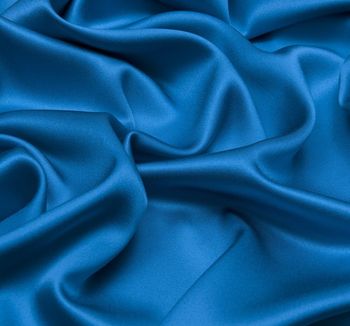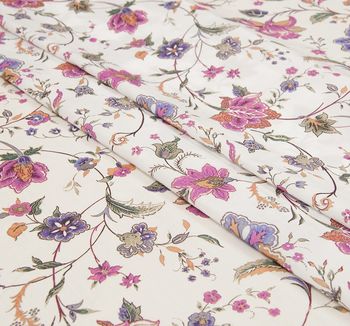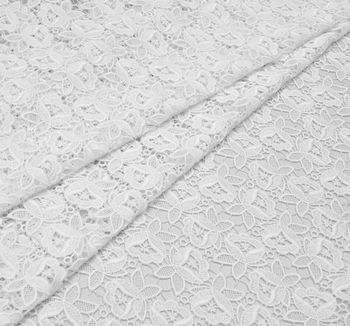Silk is a timelessly trendy natural fabric woven from the cocoons of silk worms. The world’s most famous fashion brands regularly apply it for various men’s and women’s outfits earning the admiration of the audience.
Cashmere Wool Fabrics – The Comprehensive Guide
Cashmere is a soft wool fabric woven from the hair of the Cashmere, or Kashmir goat. Cashmere fibers are extremely soft and silky to the touch and weigh practically nothing. Mostly used in clothes, cashmere fabric makes next-to-nothing sweaters, cardigans, shawls, and dresses, and also can be sewn into outerwear coats and jackets.
Cashmere wool comes in a range of natural colors – white, brown, and grey. It is often dyed, too, to get trendy shades. Cashmere is considered to be premium yarn because of its scarcity. Finer than regular sheep’s wool, it is often chosen for luxury apparel since it tends to be quite pricey.
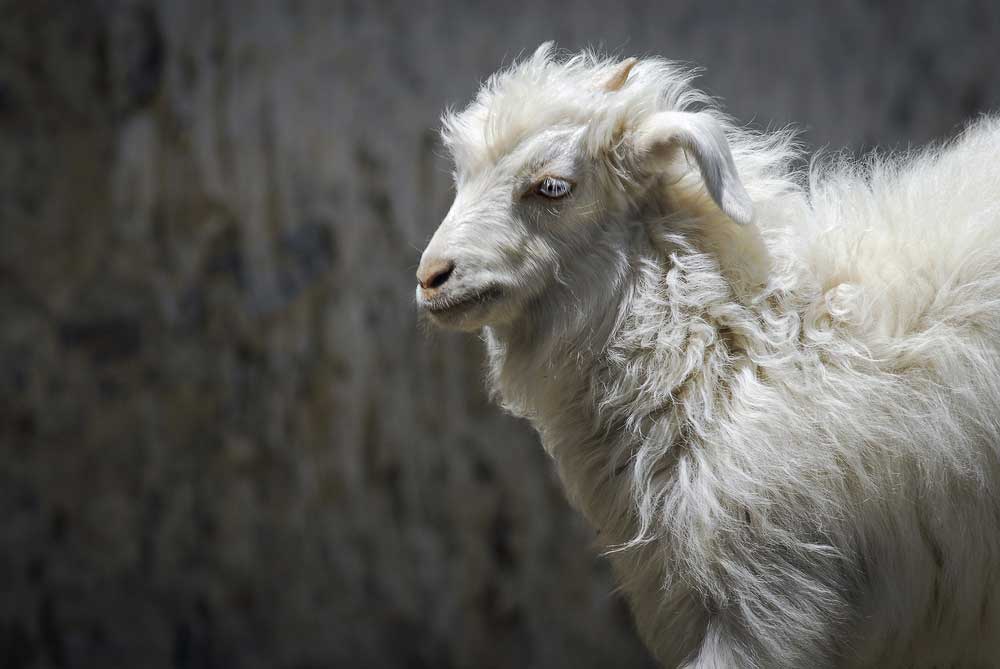
What is Cashmere Wool
Cashmere wool is one of the softest types of wool known to man. Despite its light weight, it keeps one warm and cozy during harsh winters and dank autumns. If taken proper care of, high quality cashmere can last for years without changing its look and fabulous hand.
As mentioned earlier, the ‘supplier’ of cashmere wool is the Cashmere goat that lives in Mongolia, China, India, Iran and other places. Compared to merino wool which is sheared off the animal, cashmere is combed off. The process is quite hard and time-consuming, and it all adds up in the long run, influencing the final price.
Cashmere yarn can be woven or knitted into a variety of weights suitable for all sorts of garments. What unites them all is the feel. Soft as feather. Soft as cashmere. If you consider sewing a nice cardigan to wear to work or on a dinner out, cashmere is just the right kind of thing to go with. Nothing can compare with its luxury texture and quality.
Cashmere Characteristics
Made of highly coveted fibers, cashmere is one of the first thoughts that come to mind when you’re asked to imagine something soft. What else makes it so valued? Here are some properties cashmere is known for.
- Warm. Cashmere keeps you warm, but you don’t feel hot in it. Perfect insulation properties work magic.
- Lightweight. When it comes to keeping warmth in, thickness is not the key factor. Cashmere fabrics are lighter than most wool cloths, but beat them in winter. Cashmere fibers do not exceed 19 microns.
- Durable. High quality cashmere lasts years of regular wear if it is properly cared for.
- Silky soft. Again, it is one of the softest yarns, with a silky texture.
Cashmere is not itchy, and the secret is in the shape of fibers. They are bumpy, not straight, and tend to cling to each other. That is why this yarn is such a pleasure against one’s skin, whether it’s an adult or a child who’s wearing it.
Though it is a beautiful fiber on its own, cashmere can be also mixed with silk, cotton, wool, or even such rare wool types as vicuna, mink, beaver and chinchilla. These blends are used to produce men’s and women’s suits, coats and outwear jackets, as well as shawls and scarves. Stretch cashmere is ideal for ladies’ wardrobe, as it accentuates feminine curves and creates a royal look.
.jpg)
Cashmere vs Merino Wool
There are many reasons to love cashmere. Just like wool, it is obtained from animals and is commonly used for warm clothes. But is one better than the other? Let’s have a look at the table below.
| Type | Cashmere | Wool |
|---|---|---|
| Animal | Goats | Sheep |
| Warmth | Provides better insulation and can be up to 8 times warmer than sheep’s wool | Provides optimal warmth |
| Colors | Natural colors plus dyed yarn | Dyed yarn, natural colors are not eye-pleasing |
| Texture | Lightweight, soft, smooth | Soft or wiry, can be quite smooth |
| Price | Expensive | Average |
| Care | Hand wash or dry cleaning | Hand wash in cold or warm water |
Cashmere seems to be outrunning sheep’s wool, but wool has its advantages. E.g., wool is more durable and elastic than cashmere, because its fibers are stronger. Both yarns are breathable, moisture wicking and odor resistant. Still, you will not get the same luxurious feel from wool, no matter how much time you spend on its treatment and finishing. Cashmere is the champion when it comes to softness. In the end, it all boils down to one’s preferences. Wool is a great choice for everyday wear and leisure, while cashmere with its silken hand and luxury look is perfect for special occasions.
Why is Cashmere Expensive
There are cheap fabrics, and there are expensive ones. Which factors influence the price?
- Quality. The higher the quality of fibers used for weaving, the higher the price is.
- Production. Some fabrics are quite easy to weave and dye, while others require time and labor efforts. Equipment is also one of the key factors. Cutting-edge technologies and modern looms may be quite costly, which in the end has an impact on the price of the fabric.
- Availability. Figures say it all: if yarn is available in unlimited quantities, it is cheaper. If fibers are rare or limited, they cost more.
So here’s what makes cashmere fairly priced. A single cashmere goat produces only a few ounces a year. The demand for cashmere never drops, and those looking for investment into their wardrobes prefer high quality yarn. While standards vary from one country to another, most breeders agree that cashmere fiber must be no more than 19 microns in diameter. Longer fibers are best, since they are more resistant and durable and will be less prone to pilling.
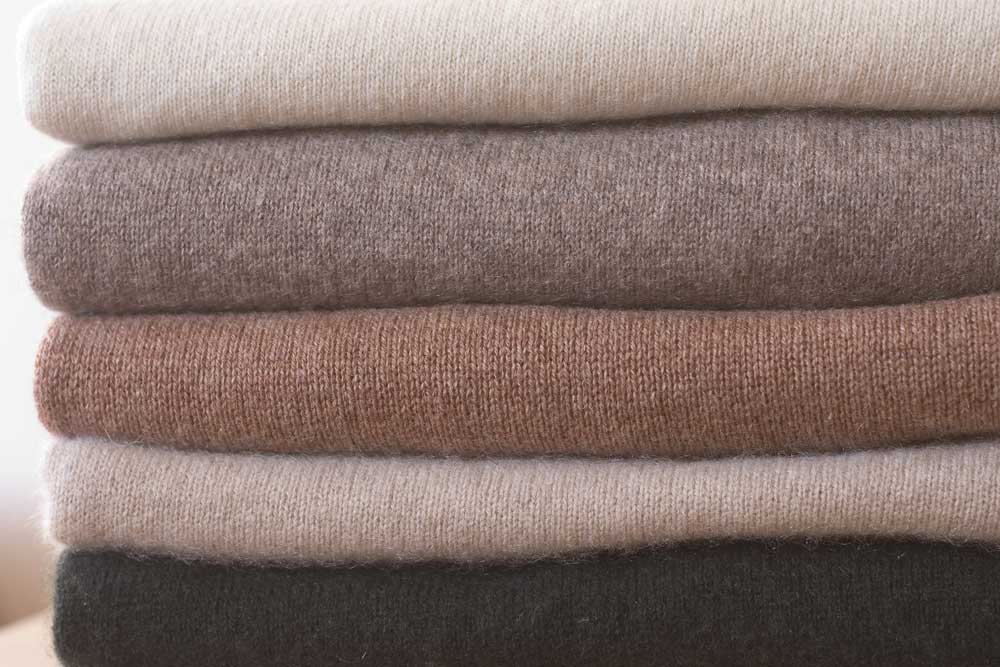
Another thing to remember: cashmere wool is quite tricky to process and requires a lot of skilled labor. Merino wool, on the contrary, is available in larger quantities and does not require that much effort. Also, cashmere goats are combed in spring, during their molting season. Such seasonality makes it even more difficult to obtain. Given the fact that cashmere goats are bred only in some parts of the planet, it becomes clear while the final fabric is on the expensive side.
The most beautiful and precious cashmere comes from Inner Mongolia. Its fibers are between 14 and 15 microns in diameter and are extremely soft and long.
What to Use Cashmere For
Most often cashmere fabric is used for suiting and coating, but it also makes other sorts of garments. The most popular end-uses include:
- Coats
- Jackets
- Ponchos
- Suits
- Dresses
- Skirts
- Sweaters
- Cardigans
- Blazers
- Scarves
- Shawls
- Socks
- Underwear, etc.
Cashmere sweaters are the coziest items in fall/winter wardrobes. Cable knit or gauzy, embroidered or decorated with crystals, they are the perfect recipe for cold days. Cashmere suits are wonderfully soft to the touch, but remember that even high quality cashmere tends to pill, and it has little body. Cashmere jackets are great additions to men’s wardrobe, while trousers made of this soft material will not last long. Instead, opt for wool blends, e.g. worsted wool with a touch of cashmere, and your trousers will turn out great.
Apparel is not the only application for cashmere. It has also found its way into our houses in the form of quilts, blankets, rugs and carpets. Cashmere used for home textiles and décor is too coarse to be turned into clothing.
If possible, seek professional help to sew the cashmere fabric you’ve selected into the required style. Skilled sewers know how to treat it carefully not to leave any marks or impressions. If you’re determined to do it yourself, testing your skills on a small swatch of cashmere is always a good idea. It’ll show you how the fabric behaves and whether it sews like a dream.
It takes from 3 to 5 goats to make one cashmere sweater. The rarest color is white.
How to Care For Cashmere
Cashmere is a luxury fiber. Even the best cashmere is prone to pilling, but it’s not a sign of poor quality. The reason is simple: cashmere fibers are quite short. When cared for properly, this regal fabric can last for years.
Here are some tips you might find useful when caring for cashmere clothing:
- Pieces made of this material should be dry cleaned, especially if there are stains on them. Most cashmere can also be hand washed in cool water. Remember to turn your garment inside out and use a special cashmere wash.
- Never wring the cashmere item, otherwise you’ll damage it. Instead gently press excess water and lay it on a flat surface to dry. We do not recommend hanging it on a hanger, or you’ll risk stretching it beyond recognition.
- Cashmere should not be ironed directly. Make sure you have pressing cloth at the ready. Avoid pressing too hard.
- Pilling is natural for cashmere. It can be removed by hand or with a cashmere comb when the fabric is dry.
Be gentle with cashmere material and store it properly when the wintry season is over. You may fold your cashmere cardigan or jumper and line it with tissue paper, and then put in on a shelf. Make sure you use some kind of protection against moths, such as scented sachets or cedar balls. Cashmere wool fabric needs to breathe, so avoid using plastic bags for storage.
Cashmere in Fashion 2019
Cashmere is quite expensive, but no good thing ever comes cheap. Investing in high quality cashmere is a wise decision, because it is timeless and never goes out of fashion.
One of the always-en-vogue pieces is cashmere sweater. It can be made of dyed or natural wool, be plain or printed. The variety of cuts available is impressive: V-neck, rollneck, boatneck, ribbed, cable knit, cropped, oversized, you name it. The black cashmere sweater is the ultimate in functional luxury – it flatters your shapes and hides what needs to be hidden, and it goes well with practically anything, from jeans to long skirts.
Cashmere coat is another key piece worth having. It also comes in a wide range of silhouettes and colors and looks gorgeous thrown over a sheath dress or a pencil skirt suit. Some tips from the fashion catwalks: a knee-length notched collar coat a double-faced cropped jacket in pure cashmere.
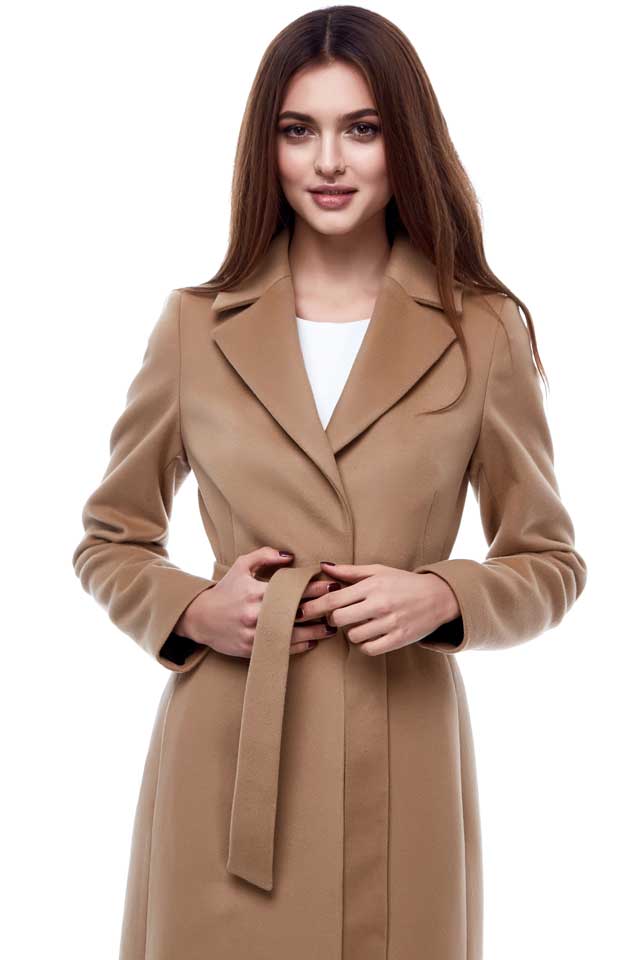
Men’s wardrobe can also be updated and moved to a new level of comfort and luxury. Two great additions include a well-tailored suit made of worsted wool mixed with cashmere, or cashmere and silk, and a cozy outerwear jacket in 100% double-faced cashmere.
As for accessories, cashmere scarves, shawls and wraps are the three fashion essentials to battle the cold weather. Checked, striped or plain, they look becoming from morning till night. Those seeking for an enveloping softness may try cashmere poncho or cape. You may as well wear it to office and stun everybody by accompanying it with another luxury item – cashmere gloves or mittens, ideal companions for wintry days.
Though cashmere wool is sourced from India, Mongolia, China and even Australia, it is woven into fabrics in European countries, such as Italy, France, or Great Britain. The variety of cloths they produce has no limits: there are lightweight, translucent fabrics ideal for babywear and ladies’ apparel, or medium-weight cashmere for cardigans, suits and jackets, or heavy options (often double-faced) for your wintry wardrobe. This premium fiber is blended with silk, cotton, and wool to increase its durability and improve overall performance. Even a tiny amount of cashmere added into the fabric makes it considerably softer to the touch. There’s only one thing to blame it for: once you become a cashmere addict, it’s hard to go back to other types of wool.
Cashmere Collection at Tissura
Cashmere fabrics are represented at Tissura by such premium brands as Dormeuil, Luigi Colombo, Holland & Sherry, Ermenegildo Zegna and Scabal. You can see some of the most luxurious cashmere fabrics in the table below. To learn more about each of those fabrics, click on the picture and get to the product page. Click on the button below the table to see the whole collection of cashmere fabrics:
Cashmere fabric, 315 € (385 US$) per one running metre;
Cashmere fabric, 342 € (418 US$) per one running metre;
Cashmere fabric, 495 € (604 US$) per one running metre;
Cashmere fabric, 357 € (436 US$) per one running metre
How to stay cool on a hot summer day? Wear fabrics built for the heat. Cotton, linen, viscose, silk – there are dozens of summer-friendly materials you can choose for your wardrobe. The best fabric to opt for when the temperature rises should be breathable and comfortable.
The wedding dress is one of the most important clothing items a woman gets to choose in her lifetime. It can be made of silk or cotton, lace or tulle, be strewn with sequins or embroidered with beads.
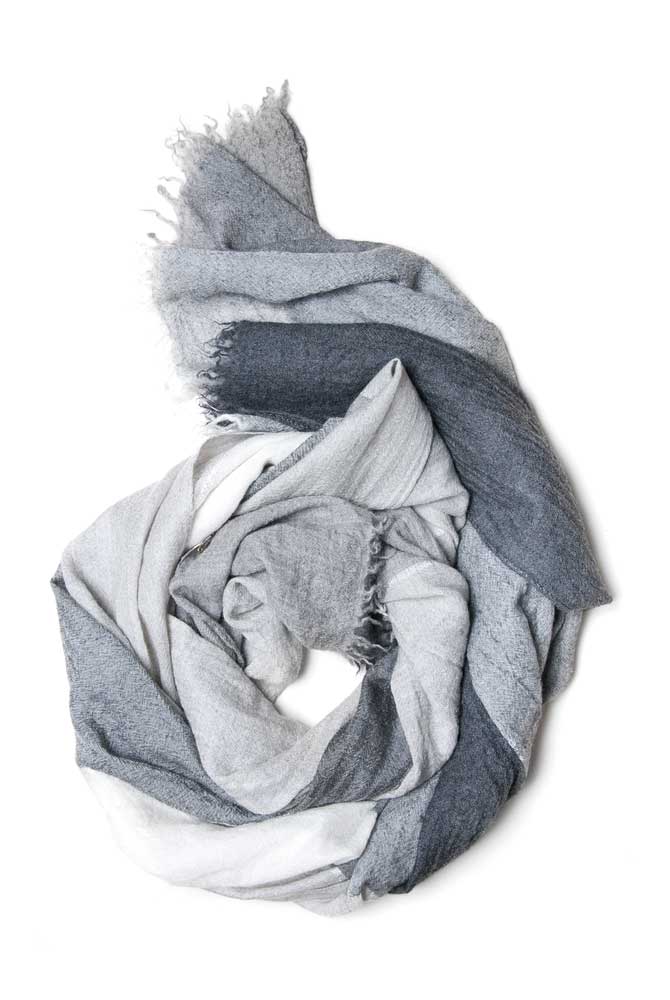
.jpg)
.jpg)
.jpg)
.jpg)
